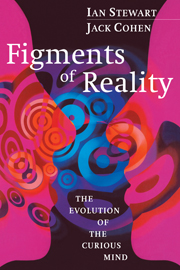Book contents
- Frontmatter
- Contents
- Preface
- Figure Acknowledgements
- Prologue
- 1 The Origins of Life
- 2 The Reductionist Nightmare
- 3 Ant Country
- 4 Winning Ways
- 5 Universals and Parochials
- 6 Neural Nests
- 7 Features Great and Small
- 8 What is it Like to be a Human?
- 9 We Wanted to Have a Chapter on Free Will, but We Decided not to, so Here It Is
- 10 Extelligence
- 11 Simplex, Complex, Multiplex
- Epilogue
- Notes
- Further Reading
- Index
8 - What is it Like to be a Human?
Published online by Cambridge University Press: 11 August 2009
- Frontmatter
- Contents
- Preface
- Figure Acknowledgements
- Prologue
- 1 The Origins of Life
- 2 The Reductionist Nightmare
- 3 Ant Country
- 4 Winning Ways
- 5 Universals and Parochials
- 6 Neural Nests
- 7 Features Great and Small
- 8 What is it Like to be a Human?
- 9 We Wanted to Have a Chapter on Free Will, but We Decided not to, so Here It Is
- 10 Extelligence
- 11 Simplex, Complex, Multiplex
- Epilogue
- Notes
- Further Reading
- Index
Summary
When JC's children David and Rebecca were about seven and eight years old, the family had many pets including cats, a tokay gecko, a corn snake, hooded rats, and several tanks of tropical fish. JC fed mice, baby rats, and cockroaches to the gecko and the snake, and large wriggly worms to the larger fish. The children invented a rationale for this, a tiny morality: some animals (worms, cockroaches, most fish) ‘don't have minds’; some (geckoes, snakes, mature rats and mice, cichlid fish) have ‘minds for themselves’; and a few (cats and people) have ‘minds for others’. Rebecca was very worried when she was about thirteen, because she felt that most of the time she didn't have a mind for others, and was therefore not a real person. She stopped worrying only when she was told that she was not, as she thought, the only person with that problem. Indeed, most of the time people have no minds, sometimes they have minds for themselves, and only rarely does anybody have a mind for others.
In The Philosophical Review for October 1974 Thomas Nagel wrote a celebrated essay: ‘What is it like to be a bat?’ In it he examined the difference between an external observer's understanding of the physical processes that occur in a bat's brain, and the bat's own mental perceptions. He argued that no amount of external observation can tell us what being a bat feels like to the bat.
- Type
- Chapter
- Information
- Figments of RealityThe Evolution of the Curious Mind, pp. 193 - 226Publisher: Cambridge University PressPrint publication year: 1997

